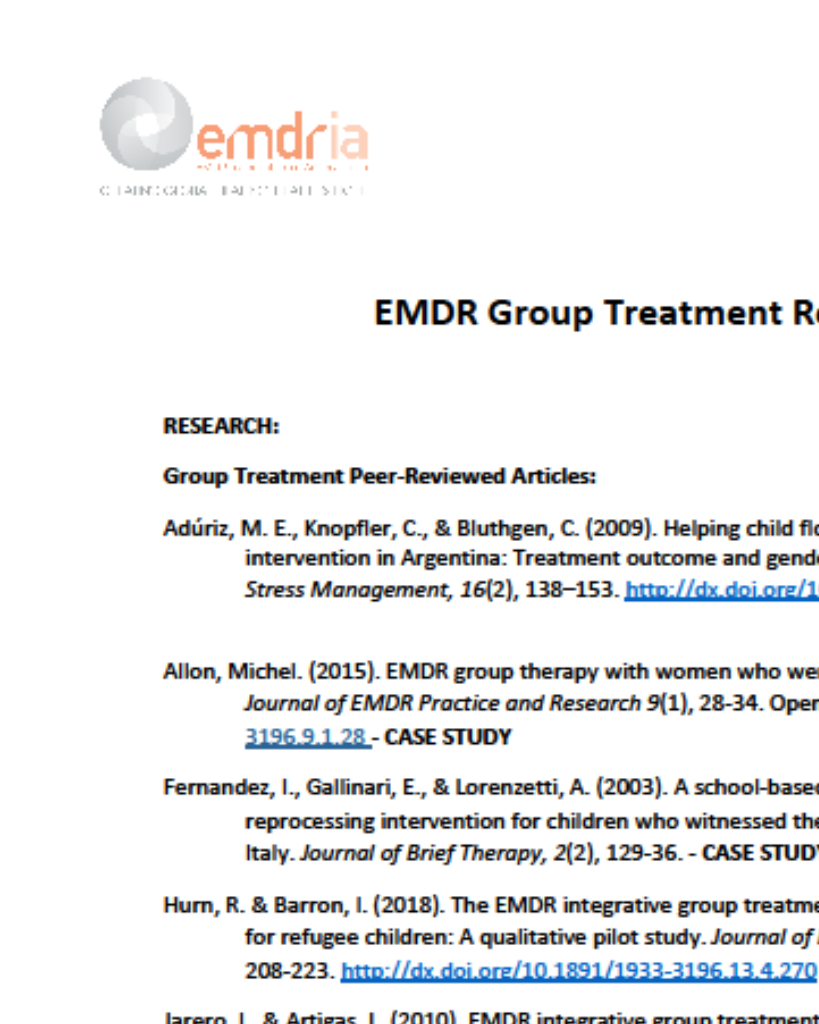Integrative approaches to EMDR: Empathy, the intersubjective, and the cognitive interweave
Missing from debates on EMDR have been additional therapeutic elements to propel productive thinking of making greater use of the model.
Article Abstract
“EMDR represents an integrative model of psychotherapy at the theoretical level. During its 16-year history, it has created quite a controversy in academic psychology. Missing from these debates have been additional therapeutic elements that are necessary to propel productive thinking into ways of making greater use of the model. These elements–empathy, the intersubjective, and usage of the cognitive interweave in conjunction with transference and countertransference issues–are explored. This addition constitutes an assimilative approach to an ever-evolving model of resolving posttraumatic stress disorder.”
—Description from publisher
Article Access
Purchase/Subscription Required
Dworkin, M. (2003). Integrative approaches to EMDR: Empathy, the intersubjective, and the cognitive interweave. Journal of Psychotherapy Integration, 13(2), 171-187. https://psycnet.apa.org/doi/10.1037/1053-0479.13.2.171
Date
June 1, 2003
Creator(s)
Mark Dworkin
Practice & Methods
Integrative Therapies
Extent
17 pages
Publisher
American Psychological Association
Rights
Copyright © 2003, American Psychological Association
APA Citation
Dworkin, M. (2003). Integrative approaches to EMDR: Empathy, the intersubjective, and the cognitive interweave. Journal of Psychotherapy Integration, 13(2), 171-187. https://psycnet.apa.org/doi/10.1037/1053-0479.13.2.171
Audience
EMDR Therapists, Other Mental Health Professionals
Language
English
Content Type
Article, Peer-Reviewed
Access Type
External Resource





